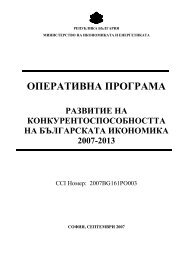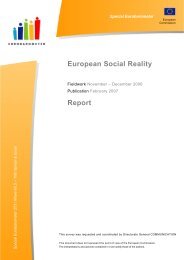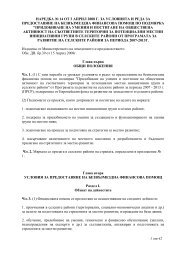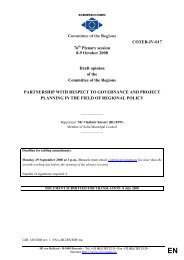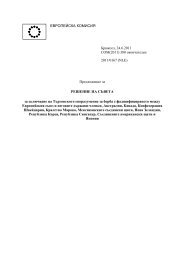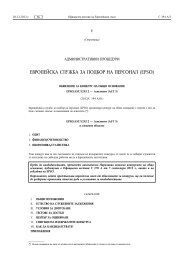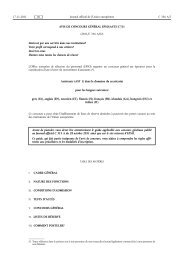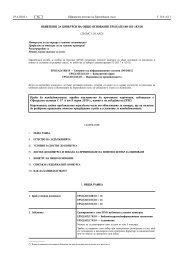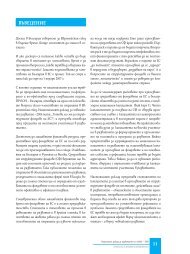National Strategic Reference Framework
National Strategic Reference Framework
National Strategic Reference Framework
You also want an ePaper? Increase the reach of your titles
YUMPU automatically turns print PDFs into web optimized ePapers that Google loves.
MALTA – <strong>National</strong> <strong>Strategic</strong> <strong>Reference</strong> <strong>Framework</strong> 2007-2013 Draft Document for Consultation<br />
Expansion and improvement of transport infrastructure<br />
The social and economic development of the islands depends upon timely and regular<br />
connections for both goods and passengers to European ports and airports, and an<br />
efficient distribution on the national network on the initial or final leg of the journey.<br />
Notwithstanding its distinct territorial constraints, Malta’s resolve is to make the most<br />
from the development of international gateways and national transport systems. This is<br />
primarily envisaged through the upgrading of the road network, ports and other physical<br />
support infrastructure.<br />
Malta aims at modernising the national strategic road network to international standards<br />
with a view to improving road safety, accessibility and mobility within the broader<br />
context of socio-economic development. Investment for the medium and long-term is<br />
earmarked to include programmes for the road network and in the seaport infrastructure..<br />
Improvements related to the TEN-T network will continue to form a key driver behind<br />
these investments. The upgrade of the TEN-T and the rest of the arterial and distributor<br />
road network is necessary to reduce congestion/less time in traffic, improve safety, and<br />
lead to a reduction in operation/transport costs. Due to Malta’s dense urban morphology,<br />
the main arterial and distributor road network (including the TEN-T network) needs to be<br />
supported by the appropriate road network infrastructure to provide the traffic linkages of<br />
medium capacity designed to standards road safety to population centres, areas of<br />
employment, areas of tourism and industrial areas.<br />
In view of the current use of private vehicles and the unsustainable growth projected in<br />
the feasibility studies, it is the Government’s objective to encourage modal shift. In this<br />
respect the Government recognizes that the current constraints of land availability within<br />
the existing urban area, will not allow a much greater increase in mobility by private car.<br />
To achieve a reduction in private mobility without compromising accessibility, the<br />
Government is looking at improving the national network of public passenger transport<br />
services. A primary objective of the Government is to improve the public passenger<br />
transport system in Malta through a process of operational reform including the<br />
introduction of new technology to improve bus service reliability and passenger<br />
information and the provision of quality public transport infrastructure for passengers.<br />
5.2 Improving the quality of life<br />
The physical, natural and cultural environment is of primary importance both to<br />
economic performance and to the quality of life enjoyed by the Maltese population. There<br />
is no doubt that the quality of life of citizens is intertwined with the quality of the<br />
environment. The national consciousness for the need to protect the environment is<br />
increasingly becoming an intrinsic part of the behaviour of the Maltese people. This is<br />
also reflected in the prioritization that Government is establishing for securing and<br />
improving the environment.



